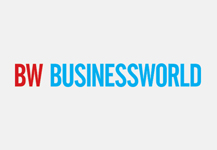What Belongs To The "Digital" World

Smart glasses being trialled by airline cabin crew to provide passengers personalized flying comfort. Courier companies enabling employees to find the product they need from expansive warehouses with the help of robots programmed to track and find goods. Agri companies deploying smart tractors that are empowered with camera vision to help tell the difference between a healthy plant and a weed…the examples are endless. But what they all point to is an obvious trend: businesses who want to stay ahead of the curve are doing everything they can to leverage digital technology.
On the surface, it is easy to believe that all it requires for an enterprise to become truly digital is to apply a few smart tweaks to the way it runs. But the changes are not superficial.
Making an enterprise digital, as we often hear, is more than implementing new digital technologies or merely modernizing existing ones. Rather, digital transformation is about changing every business process and function in such a way that a specific set of new technologies most relevant to a business are used to improve operational efficiencies to deliver tangible business value and stellar customer experiences.
In fact, I’d say that what lies at the heart of digital transformation journeys is a brand-new approach towards technology. An approach that alters how a business operates so that nearly everything it does is made more efficient by the considered use of smart technology. This includes employing smart operations to manufacture connected goods that inspire its customers to come back for more.
But what is driving this digital transformation in the first place? A few things. First, the relative ease with which companies can procure and deploy low-cost, low-barrier technology via the cloud. Second, the emergence of a new workforce accustomed to the ubiquity of consumer-facing digital tools that expects the experience these provide to be replicated in the office environment as well. Third a growing need to streamline ops in a highly competitive globalised world that requires the automation of mundane tasks. And fourth, the constant pressure for innovation to stand out in an increasingly crowded marketspace that is compelled to meet highly personalised end-user needs.
The technologies that make these dramatic changes possible include the Internet of Things (IoT), cloud, mobile, bots, cognitive technologies, machine learning (ML), artificial intelligence (AI), and augmented reality and virtual reality (AR/VR).
The real value in the adoption of these technologies lies in how they are delivered to users, whether they be employees or customers, to enable their interaction with an enriched, intuitive user interface. It is this experience that can make a huge difference in successful technology adoption and ROI within an organisation.
So, what is that really distinguishes real digital transformation? It is the capacity to positively impact all phases of a business value chain, in a profitable way, while improving user experience and introducing new innovative business models. For example, Disney uses its IoT-powered MagicBand worn by visitors to its Magic Kingdom to optimise ticket sales while also improving queue management. Featuring long-range radio whose signals can be picked up by Disney’s queue management team, the bands help visitors gain fast access to Disney parks and attractions without having to stop to buy tickets repeatedly, helping improve both customer satisfaction and the company bottom line.
The MagicBand is said to have played a leading role in seeing Disney’s parks and resorts revenue soar by 9 percent to $3.9 billion during the first quarter of 2015 as operating income rose 20 percent to $805 million.
But most of all, when an enterprise decides to go digital, what it needs is a clear roadmap. This is because the drive to go digital will be different for each business. While some could be propelled by a tech perspective, others could be guided by business requirements. What is crucial in both scenarios is that business processes are mapped to the maturity of technologies in any organisation. It is only then that a business can effectively draw a roadmap that is unique to its organisational transformation journey.
That’s why a company may have the best data scientists heading its digital operations, but that doesn’t ensure it will become a successful digital business. Instead, enterprises will become ‘truly digital’ companies when they have the ‘right’ digitally-driven approach informing the entire organisation. Such an approach ensures that everyone in the company is driven by a common goal to make products that are smart, connected, and responsive, so that these can best meet today’s customers’ requirements
Disclaimer: The views expressed in the article above are those of the authors' and do not necessarily represent or reflect the views of this publishing house. Unless otherwise noted, the author is writing in his/her personal capacity. They are not intended and should not be thought to represent official ideas, attitudes, or policies of any agency or institution.
Thought Leadership
Series